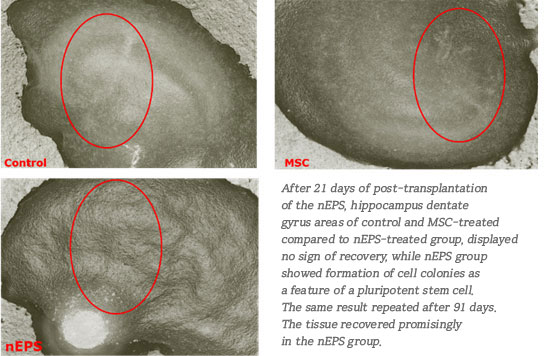Stem Cell Treatment & Research Institution
Nervous System Disease Program:

Researchers at STRI CNS disease section are working to establish the CNS disease treatment mechanism using our stem cell.
What we have achieved so far:
– STRI has confirmed that nEPS can penetrate through BBB (blood-brain barrier)
– STRI has confirmed that nEPS can regenerate the tissue which is damaged
– STRI has gained too much insight in CNS disease treatment using stem cell
Parkinson’s disease:
Parkinson’s disease (PD) is a long-term degenerative disorder of the central nervous system that mainly affects the motor system.
Generally, the symptoms gradually develop over time. Early in the disease progression, the most obvious visual symptoms are shaking, rigidity, slowness of movement, and difficulty with walking; Thinking and behavioral problems may also occur. Dementia becomes common in the advanced stages of the disease. Depression and anxiety are also common, occurring in more than a third of people suffering from PD.
Other symptoms include sensory, sleep, and emotional problems. The main motor symptoms are collectively called “parkinsonism”, or a “parkinsonian syndrome”.
Patients Symptoms:
– Constant tremors in the head
– Constantly clasping the hand
– Impaired balance
– Slight shaking in body
– Decreased muscle strength
– Decreased liver and stomach function
How can repair the Brain:

The nEPS homing effect in a Parkinson’s disease mouse model
– Cell migration to substantia nigra of mouse brain after tail vein nEPS injection.
Stem cell fate was examined on 7, 14 and 21 days after the nEPS implantation. Seven days post-implantation, the nEPS colony revealed well-defined cell clusters alongside the hippocampus injury.
Control and MSC groupswere remained injuredin the site of hippocampus tissue but nEPS-treated group showed the recovery of injured site of hippocampus tissue.
The regeneration of hippocampus was observed within 3 weeks. Results showed a distinctive improvement in brain tissue recovery following transplantation of the nEPS, indicating a rapid nEPS associated amendment.

Disease Program:
Human Mesenchymal stem cell (hMSC) may potentially serve as a renewable cell source for transplantation. In Parkinson’s disease, hMSC may replace the degenerated brain neurons. We observed Parkinson’s disease patients after treatment with hMSC. Patients who were treated with hMSC showed a steady improvement. An improvement was observed in daily living activities.
You can check the progress of patient treatment through YouTube.The hMSC treatment has a protective effect on progressive loss of dopaminergic neurons. Complex mechanisms mediated by trophic effects of hMSCs. Differentiation of hMSCs into functional neurons may work in the neuroprotective process.
So far, several studies have demonstrated the presence of stem cells in the brain and the ability of some cell types to differentiate into dopaminergic neurons.